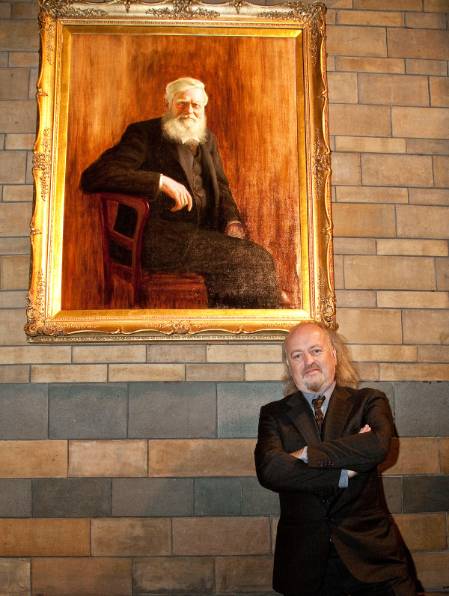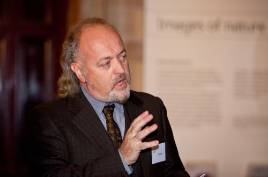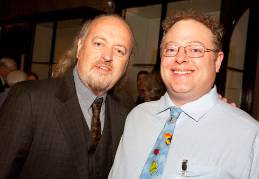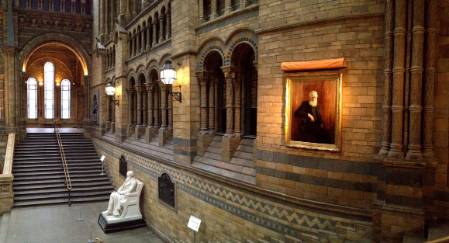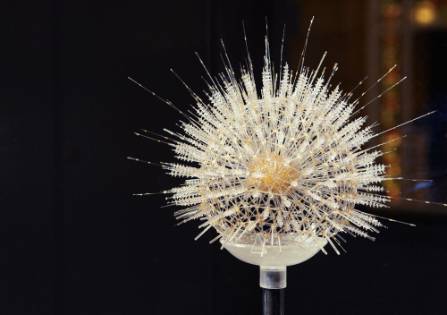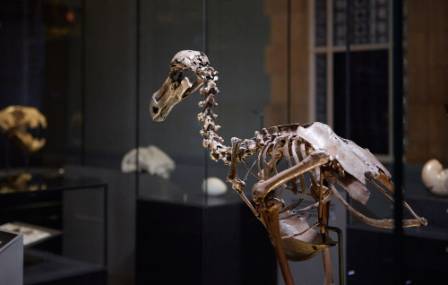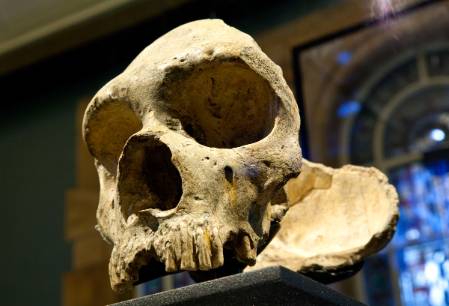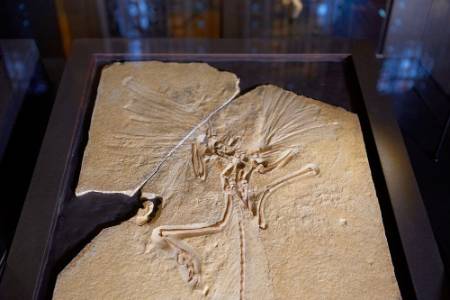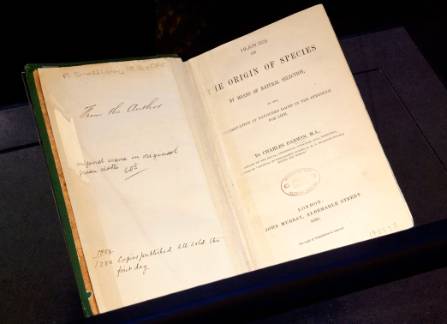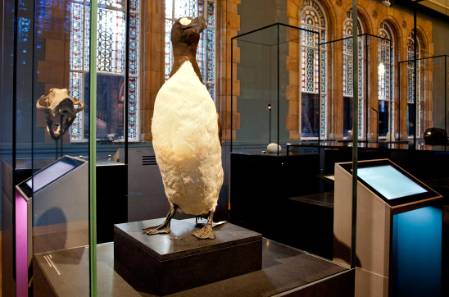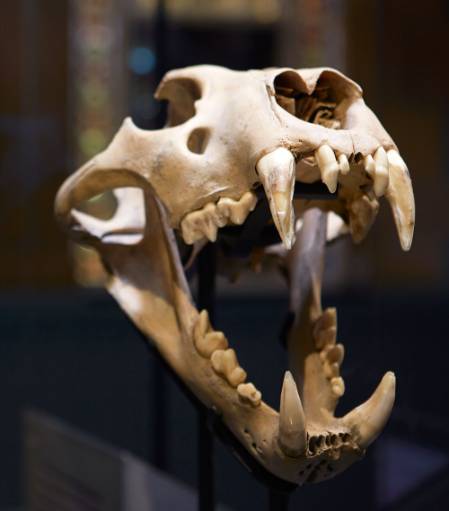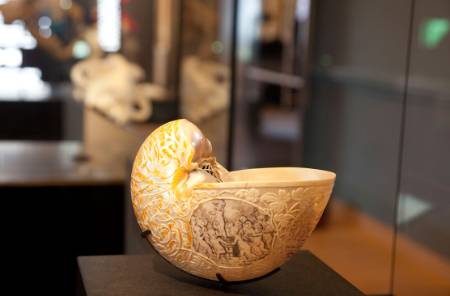On the evening of 24 January 2013, comedian and naturalist Bill Bailey unveiled this striking portrait of Alfred Russel Wallace at the top of our grand Central Hall staircase, near to the Charles Darwin statue.
As they gather around the famous Diplodocus bones in the Museum's most impressive meeting space, visitors can now enjoy the gaze from on high of the two greatest figures in natural history - not to mention the two greatest beards.
The unveiling of the painting marked the official launch of Wallace100 and the Wallace Letters Online resource which are part of the celebrations in this year's anniversary of Wallace's death. The Museum plays a central part in these activities and forthcoming events.
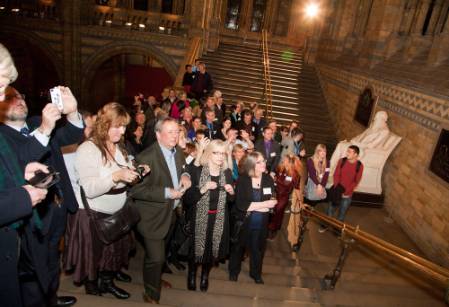
Guests at the Wallace100 launch event taking photos of the portrait being unveiled. Sir David Attenborough was among those who attended.
Alfred Russel Wallace 1823 - 1913 was an intrepid explorer, brilliant naturalist and remarkable intellectual. It's sometimes overlooked that he co-discovered the process of evolution by natural selection with Charles Darwin. But this year's anniversary events should help redress the balance.
As a long-time admirer of Wallace and also the Patron of the Wallace Memorial Fund, Bill Bailey has been in the media spotlight a lot of late talking about Wallace's under-recognised contribution to our understanding of the natural world.
Bill Bailey and the Museum's Wallace expert, Dr George Beccaloni (right), at the unveiling in our Central Hall.
Museum curator and Wallace expert Dr George Beccaloni (above right), tells me how pleased he is to see the portrait return to its original place near the statue of Charles Darwin after an absence of over 40 years:
'The Central Hall is a beautiful space, but it has always struck me as being a little "cold" and my aesthetic sense was disturbed by the fact that the memorials on the wall of the central staircase are asymmetrical - there being nothing on the wall above and to the right of the Charles Darwin statue to match the monument to Selous on the opposite side.
'With the unveiling of the Wallace painting both problems are gone. The space seems a lot warmer with Wallace looking benevolently down at the crowds and the painting fills the empty gap superbly on the wall near Darwin. Perfect!'
George Beccaloni
The magnificent oil painting by artist J W Beaufort was donated to the Natural History Museum in 1923. At its original unveiling, the President of the Royal Society said of Wallace and Darwin in his opening speech:
'Circumstances arranged that the discoveries of these two men came, as it were, at the same moment and on the very same theme side by side before the scientific world. Such an attendant circumstance might, in some cases, have proved an embarrassment to one or other of them, but, as we all know, instead of being an embarrassment it formed a bond of generous association between them, each one of them striving to exalt the merits of the other. That part of the history of science will ever remain as a noble and inspiring feature connected with the work of these two men. Therefore the picture that we have there is not only a memorial of one whose memory is part of the historic treasure of science, but it will also be an abiding source of inspiration for the future, inasmuch as it represents a noble trait of character as well as genius, which went together in the personality of Alfred Russel Wallace.'
Follow the painting up to the newly-opened Treasures Cadogan Gallery to discover Wallace's insects on show. And you can find out a lot more about the history of Wallace's portrait in George's Wallace100 blog.
Read the news story about the unveiling and Wallace100 launch
Find out about the Wallace100 celebrations
Keep updated on all the Wallace events coming up at the Museum and nationally



